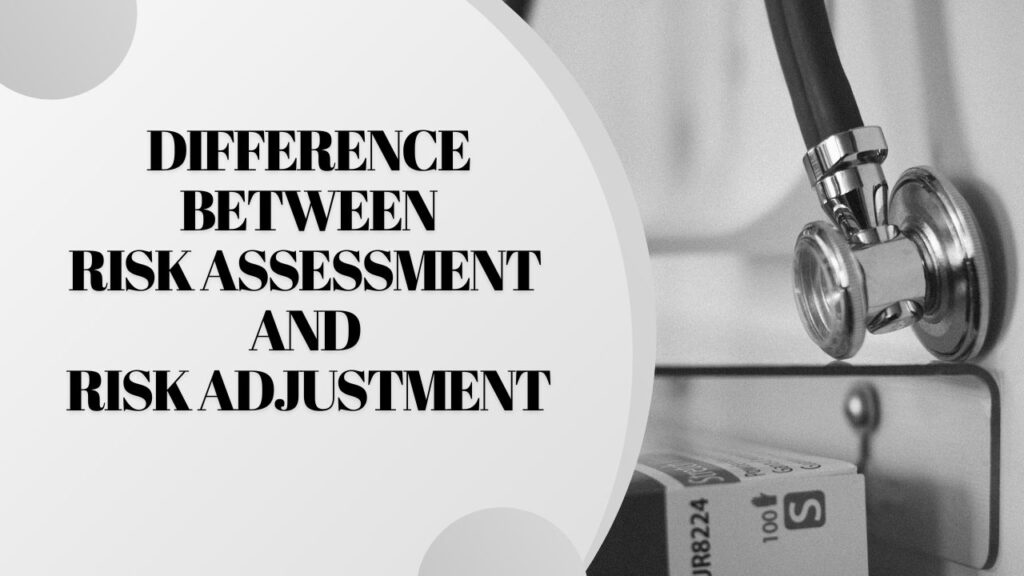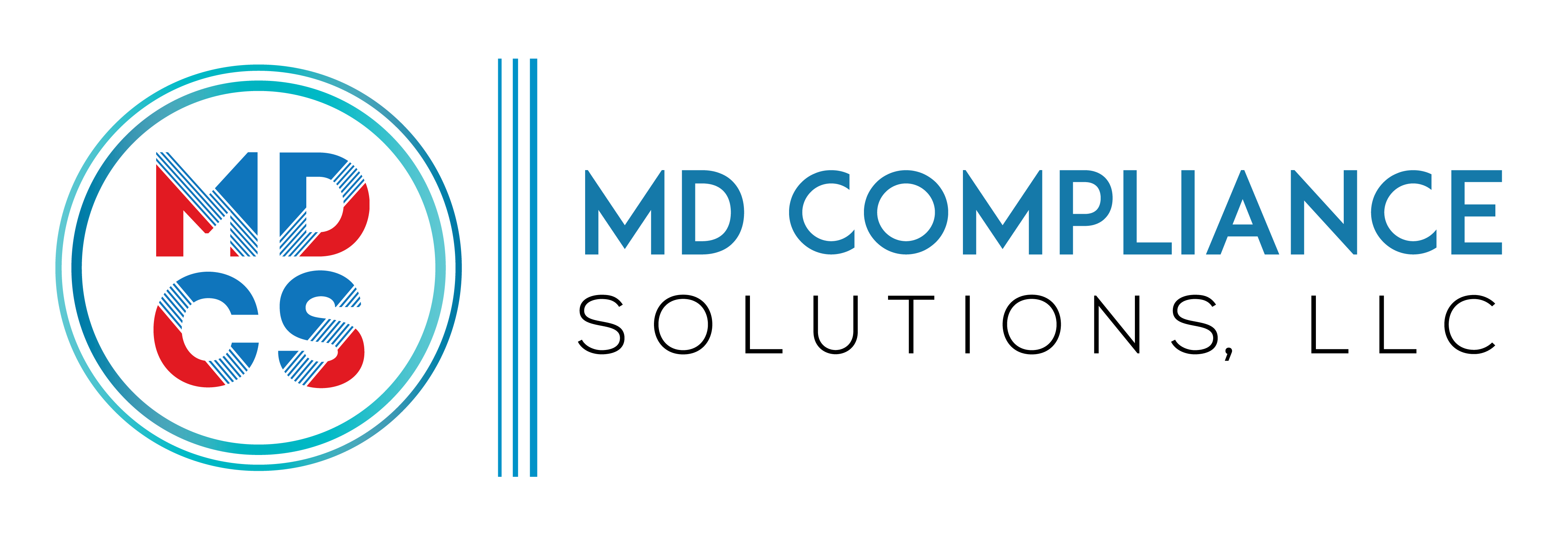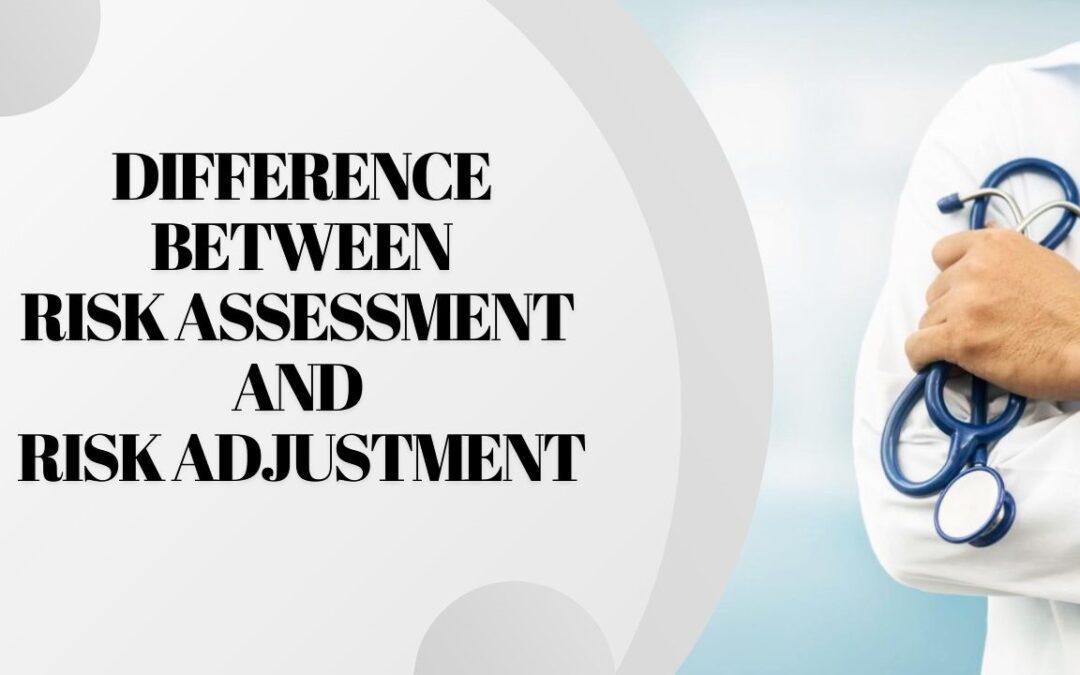Table of Contents
Healthcare is ever-evolving and intricate industry, where the terms risk assessment and risk adjustment are frequently used interchangeably. Nonetheless, they stand for unique concept that are essential to guaranteeing the effectiveness and proficiency of healthcare services.
Risk assessment is a systematic process that includes identifying, analyzing, and evaluating potential risks in order to ensure safety and lessen undesirable outcomes. In the healthcare field, the assessment of a patient’s health risks is based on their medical background, lifestyle, and present condition.
Risk adjustment is a crucial method used in the healthcare sector to forecast future costs associated with patient care based on the health of the patients. Health insurance companies use risk adjustment to assess the potential financial risk of providing insurance to individuals with high-predictability healthcare needs. Insurance companies are able to cover members with varying medical costs due to this altered “risk.” In this post, you will understand difference between risk Assessment and risk Adjustment in healthcare.
What Does Risk Adjustment Mean for You?
Risk adjustment is required since medical practices have a tight relationship with health insurance companies and patient plans. While the standard fee-for-service payment system relies reimbursements primarily on services performed, insurers may be rewarded for their efforts by using exact diagnostic codes to manage patients’ medical conditions. This is where adjusting for risk comes in. Ensuring that medical professionals receive fair compensation for treating patients with complex medical conditions is one way that this method supports financial stability within medical practices.
Moreover, risk adjustment offers healthcare providers a number of advantages, including enhanced patient participation and tailored treatment plans. By collecting comprehensive data on patients’ demographics and health, providers can improve patient happiness, improve health outcomes, and provide more individualized care. Risk adjustment also helps to provide a more equitable distribution of healthcare resources by ensuring that individuals with greater healthcare needs receive the support they need. Risk adjustment improves patient well-being overall and fosters healthier relationships between patients and providers.
Why is risk assessment important?
A healthcare risk assessment systematically identifies and evaluates potential health hazards in individuals based on their medical history, lifestyle, and current state of health. This process facilitates understanding and lowers any hazards to the patient’s health. Since it enables medical professionals to identify patients who pose the greatest danger and take necessary action, this approach is crucial for early detection and prevention. These objectives show how the medical staff may more effectively develop solutions by using the risk assessment process, which will enhance the standard of healthcare service and make the most use of available resources.
Main Differences Between Risk Assessment and Risk Adjustment in Healthcare
Risk adjustment is a financial system that ensures healthcare professionals are fairly compensated, whereas risk assessment is a proactive method to detect and handle potential problems. Both are necessary elements of a healthcare system that runs smoothly. Although risk assessment and risk adjustment are crucial components of healthcare risk management, they have different functions in identifying and controlling health risks to patients and medical staff.
Objective:
Risk assessment: Emphasis on evaluating risk factors that could impact a patient’s health in light of that patient’s lifestyle, prior medical history, and current condition(s).
Risk adjustment: focuses on changing insurance rates and health care payment schedules to ensure that appropriate compensation is given according to patient difficulties.
Concentrate:
Risk assessment is a process used to determine the likelihood that a patient may experience any health issues.
Risk adjustment makes ensuring that while working with high-risk patients, insurance companies and other health service providers receive a sufficient return on their investment.
Procedure:
Risk assessment: Formal methods, such as screening exams, interviews, and other diagnostic procedures, to determine a patient’s chance of contracting particular medical problems (such as diabetes, heart disease, etc.).
Risk adjustment: Lowers costs by using financial models that project future medical expenses and insurance payments using a risk score based on the patient’s diagnosis and other associated consequences.
Time Frame:
Risk assessment is a incessant process, mainly involve in the status of ptients health status.
Risk adjustment is usually done annually or on a regular basis, modifies payments according to the risk profile of the patient group for a specific time frame.
Outcome:
Risk assessment: In this sense, it gives medical practitioners information about potential health risks and issues before those risks materialize.
Risk adjustment closes any gaps in the healthcare system by ensuring that doctors who treat patients who are deemed hazardous and expensive to treat receive appropriate compensation, so balancing the financial position.
Application:
Risk assessment: When clinical practice is involved, it can aid in decision-making and stop the breakout and spread of illnesses.
Risk adjustment is a tool used in both the administrative and financial domains to control healthcare costs and preserve the financial sustainability of healthcare delivery.
Role of Technology:
Modern technology has revolutionized risk assessment and risk adjustment in healthcare. Healthcare practitioners can now precisely evaluate patient risks and forecast expenses with the help of artificial intelligence (AI), machine learning, and predictive analytics. These resources support healthcare organizations in maintaining their financial stability as well as providing higher-quality care.
CDSS (Clinical decision support systems) are powered by AI, for example, it can help medical professionals to identify patients who are at high risk and suggest preventive measures. In a similar manner, sophisticated algorithms in risk adjustment models help payers anticipate healthcare costs more accurately for a variety of patient populations, enhancing the equity and precision of compensation schemes.
Wrap Up:
It is critical that healthcare providers and patients alike know the difference between risk assessment and risk adjustment. Adhering to meticulous reporting protocols and adopting risk assessment and ruling techniques enhance the patient’s welfare. Encouraging risk adjustment ensures that people with different health requirements have equal access to high-quality care and encourages equitable payment for healthcare services.
Read More: What are the Main Differences Between Inpatient and Outpatient Care?

Reference 1,

